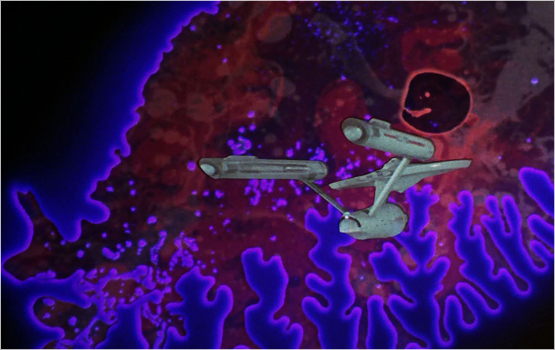The five-year mission of the Starship Enterprise has brought the vessel and her crew to the forefront of an important first contact situation.
Under the command of Captain James T. Kirk, the ship is heading to the planet Syhaar Prime in the Beta Quadrant—the home world of an alien civilization preparing to take its first steps on to the galactic stage.
One year earlier, the Enterprise came across a badly damaged Syhaari explorer vessel drifting in deep space. In collaboration with the explorer’s captain, Kirk and his crew were able to restore the ship to full function and send it on its way. And now, as the Syhaari display rapid technological advances made over the past year, hard questions must be asked.
Did the Enterprise crew leak advanced technology or information to the Syhaari during their first encounter, in total violation of the Prime Directive?
James Swallow is an author who really gets Star Trek. Reading his stories make you appreciate the message behind some of the best tales that the Trek franchise has to offer — and The Latter Fire is certainly no exception.
Fear is a consuming and pervasive force in our world. Fear of that which is different lies at the heart of countless misunderstandings and conflicts. In The Latter Fire, this idea is explored through a number of interactions throughout the story. The primary conflict in the story stems from an encounter between Syhaari explorers and an alien race called the Breg’hel.
Tormid, the captain of a Syhaari ship, commits atrocities against the Breg’hel, murdering the entire complement of a Breg’hel vessel. Fearing the unknown, he panicked and let his base emotions take hold.
Understandably, the Breg’hel were furious. Due to the interconnected nature of their species, the Breg’hel couldn’t conceive that the Syhaari weren’t all responsible for the death of their people. Once again, a huge misunderstanding leads to conflict, predicated mainly on fear. I found this aspect of the story to be very timely, given what is happening in politics and world affairs today. Fear is behind so much of what we do and think that it leads to rash decisions and poor judgement on the part of decision makers, law makers, and the general public.
Preconceived notions and prejudice both play a major role in the story as well. This idea plays out in the novel through a number of situations, including the Federation Diplomatic Corps and Ambassador Xuur’s preconception of Kirk and what he stands for. The aforementioned Breg’hel and their notion of the nature of the Syhaari could also be seen as a preconception that leads to misunderstanding.
 The “Leviathan” is reminiscent of the giant space amoeba from “The Immunity Syndrome.”
The “Leviathan” is reminiscent of the giant space amoeba from “The Immunity Syndrome.”
Until people have open minds and truly aim to learn about their neighbours and people with different ideas and ways of life, there will always be conflict. A theme in this story seems to be “challenge your preconceptions or they will challenge you.”
Another thing that James Swallow does really well is world-building. In The Latter Fire, this talent particularly shines as he creates two fascinating cultures, along with a giant space-faring leviathan creature. The novel is filled with very Original Series ideas, and was very reminiscent of some of the big spectacles in that series.
Final thoughts:
Communication, cooperation, and friendship; it is these ideals that Star Trek says should guide humanity into the stars. Fundamentally, The Latter Fire is about those ideas. It is Star Trek in the truest sense, and James Swallow captures the essence of “Roddenberry’s philosophy,” as it has become known.
– Reviewed by Literature Editor Dan Gunther
